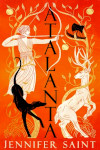Reading Life: 25th September 2025
Posted 29th September 2025
Category: Reading Life Genres: N/A
Comment?

I started reading Reminiscences Of Jane Austen’s Niece Caroline Austen yesterday. It’s a short book published by the Jane Austen Society, a collection of diary/records by Caroline that expands upon notes her mother kept. I was, in fact, originally looking for Caroline’s memoir of her famous aunt but Chawton Cottage, which sells the Society’s books, didn’t have it in stock. (I didn’t realise until yesterday’s reading that you can in fact find the memoir within the larger A Memoir Of Jane Austen that James Edward Austen-Leigh compiled.)
Anyway, the reminiscences are actually just a diary of family’s and friends’ events and it’s proving to be an appealing short read. It’s organised by year with the various events of said year written as paragraphs. This paragraph is so like a Jane Austen novel I may have laughed out loud:
It was from Sennington that my grandmother’s adventures began. She and her other sisters, when young women, were left there for some months, whilst their mother was making visits in Berkshire, staying chiefly at Barton Court – Mr Raymond’s. She was accustomed to take with her one daughter when she went from home – to wait upon her, as was said and at the time to which I refer, she had taken Jane, afterwards Mrs Fowle. At Sennington there lived a family named Hinxman, not in the ranks of gentility, well-to-do yeomen farming their own small property. Mr Hinxman aspired to the hand of one of the Miss Cravens, and obtained it. They were married during her mother’s absence in Berkshire; and still worse, a friend of his, Mr Bishop, a horse-dealer, as I have heard, with no money and no character, prevailed on another daughter, Mary, to marry him. Where Governor Craven was all this time, I do not know; but apparently not with his wife, nor at home with his daughters (Austen, 2004, p.7).
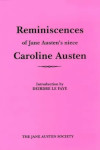
Although it is an expanded diary, as you can see from that quote, there’s just something about the way that Caroline writes. Sadly, as Deirdre Le Faye recounts in her introduction to the book, Caroline wrote quite a lot of fiction as a child but found herself mocked by those around her – likely not including her aunt Jane – and destroyed them (Le Faye, 2004, p.VII). According to record, her stories had their characters meet violent ends as young Caroline felt it imperative to do so. In later life, she destroyed the remainder of the work left (Le Faye, 2004, p.IX) so sadly we will never see them. It’s good, I think, that we at least have this diary, her memories of her aunt, a couple of pictures (including a photo in later life), and mentions of Caroline’s work in Jane’s letters.
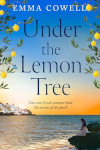
(I decided after writing the above to go and have a look at Jane letters and found that not only did she correspond with Caroline a lot – I love Deirdre Le Faye’s comprehensive indexes! – but she made a good few comments on Caroline’s writing that combine measured criticism with a positive outlook. And here I was surprised – aunt Jane suggests that a male character in one story is not being treated badly enough and suggests Caroline has him… off himself (Le Faye (ed.), 2011, p.300). I’m still getting over the shock of that one. She also says he could change his surname instead – something that would punish him more than Caroline already had, essentially – but, clearly, Caroline’s ideas of violence didn’t stem from nowhere unless Jane was in fact mocking her and… I agree with Le Faye that, all of the references combined point to Jane being sincere in her encouragement. Jane’s letter is dated December 1814, when Caroline was nine years old, and the suggestion by Jane to have the male character off himself matches the young age Le Faye discusses in Caroline’s book’s Introduction.)
Having written more than I’d thought I would about a rather obscure book, two remain. I recently finished Emma Cowell’s fourth book, the contemporary romance Under The Lemon Tree which I’d been reading slowly over the course of a month. After having spent the previous six years mostly at home due to ill rabbits, when Liz Fenwick invited me to her Penzance-based book launch I jumped at the chance for a long weekend away and it culminated in a podcast recording with Liz and Emma at Liz’s lovely house, often seen in her TikTok videos. Obligatory photograph:
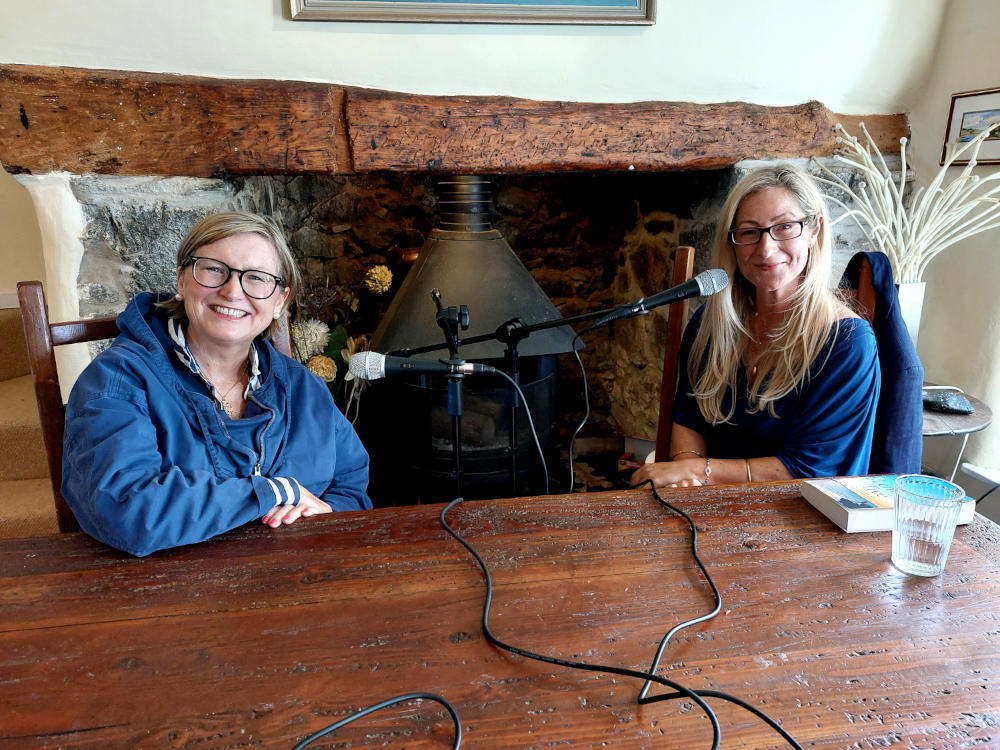
Thereby I received Emma’s book. Key to Emma’s writing, to me, is the way she takes a or some topic(s) that may or may not be well-covered in society, and delves into it or them from her specific angle or way of seeing things – I’m not really sure exactly how to describe it, it’s easiest to describe it as her Unique Selling Point. In her third book, the topics were songwriting and early onset dementia; in her first book, it was IVF and lost love; and now, in her fourth (I haven’t read the second), it’s grief. Right time, right place, perhaps – I’m still very much missing my rabbits – but Cowell’s focus on grief lasting as long as it needs to, so to speak, and letting oneself work through it, are lovely, and it’s rounded off by the following at the bottom of the penultimate page: ‘grief is simply love that is missing its target’. I took a few moments for that one.
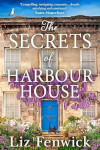
Lastly, I’m currently reading Liz Fenwick’s (surprise, surprise) The Secrets Of Harbour House. This is Liz’s 13th book, and I say that because I’m a bit in awe, not because she’s written so many books (I mean, that is awesome but not what I’m talking about) but because whilst Liz’s books were already very good reads, she’s kind of levelled up again. I am very aware that I can picture the location pretty well thanks to Liz’s invitation to her launch but there is a quality of immersion and world building in this new book that surpasses her others. I’ve read three of her other books – her previous (12th), her eighth (I believe), and her very first – so I’ve read from a range of ‘eras’, but the effective levelling here is a massive leap from her entirely respectable previous book. Needless to say I’m enjoying it – at 50 pages in we’re about to move from what’s so far been a contemporary story to a historical thread – and finding myself extremely excited about where she might go with her next.
References
Austen, Caroline (2004) Reminiscences Of Jane Austen’s Niece Caroline Austen, revised edition, The Jane Austen Society
Le Faye, Deirdre (1986) Introduction, in Austen, Caroline, Reminiscences Of Jane Austen’s Niece Caroline Austen, The Jane Austen Society, pp. VII-IX
Le Faye, Deirdre (ed.) (2011) Jane Austen’s Letters, 4th edition, Oxford University Press
Reading Life: 18th November 2024
Posted 18th November 2024
Category: Reading Life Genres: N/A
Comments Off on Reading Life: 18th November 2024

My use of a non-podcast reading list continues to do well; I mentioned that in my last reading round up but it bears repeating, at least for me, because it seems I’ve found something that’s working – having used it for about two months now, I believe that it could be called a habit or routine.
I haven’t had this much success in finding ways to reduce the amount of time spent pondering about what to read next since the ‘Long-Awaited Reads’ months a couple of former bloggers hosted in the 2010s. These were held each year in January; I participated in two of them (see one and two) and they may have run for one year prior to that. They were useful in getting books read. My attempt at a follow up in 2019 didn’t result in my reading any of the books I chose… and I still haven’t read any of those books… and I do think that that was probably due to it being me resurrecting the idea by myself. A key factor in the concept, I believe, looking back, is that we were doing it as a small community – it was a real event.
While it’s true that my brand new shiny non-podcast reading list idea doesn’t particularly lean into books that have been on my shelves for as long as any of the Long-Awaited books I chose – more on that in a moment – I think having created something centred around me and my own reading to the exclusion of others has helped bridge that gap, so to speak. It’s not an event, but it’s my… thing.
Of that moment, I have a vague plan to introduce books that have been on my shelf for longer in time; I’m aware that early successes, those dopamine hits, happening now, will help me when I’m adding books I’ve lost excitement for. Books I was really looking forward to, then the passage of time and new books led to me forgetting them. They’ll probably include books from that last, self-created and aborted, Long-Awaited list.
In other news I am still happily reading Alex Hay’s The Queen Of Fives, Susan Stokes-Chapman’s The Shadow Key, and Lee Seong-bok’s Indeterminate Inflorescence.
The first is delighting me not only in its whole (Hay has just got better and better) but in its use of family. We see a very wealthy family about to be the victim of a con – if it goes ahead (I’m not there yet) – and so they could have been less developed as individual characters, but Hay has gone full steam ahead on fleshing them out and giving you a lot of reason to care for them. It makes for a thrilling prospect – whatever will he do when the conwoman, who we also follow, strikes? Perhaps, unlike his first novel, The Housekeepers, wherein we feel most for the tricksters, here in his second book we should feel most for those whose wealth is at stake?
That could actually be it – for all we’re seeing Quinn’s, the conwoman’s, plans, perhaps Hay will turn it on its head this time.
The second book is wonderfully Gothic and one of the most immersive books I’ve ever read. What I’m enjoying is that the plot itself is allowed to move slowly and be predictable at points and it doesn’t matter one bit because the author is so talented; it reminds me of classic novels where character is everything.
And Indeterminate Inflorescence, well, it can’t be discussed in quite the same terms because it’s not fiction, instead it is a collection of sayings – “aphorisms,” says the back cover – from poetry lectures. It’s got some wonderful insights though certainly I think it would be better used as a book to dip in and out of instead of how I’m doing it which is to read it straight through (I’m scheduled to review it, after all). I’m keeping that in mind as I read – whilst it’s not a high-on-aesthetics coffee table book, it would do well as one.
The sun is slowly going down here as I write on Monday 11th November; I spent a couple of hours in the morning working outside – it’s not cold and hasn’t rained much recently. Last year I was in a t-shirt until the 5th November – I remember that very well. This year I’m still in a t-shirt today, though I put on a thin jumper to write outside due to the act of staying still. As someone who hates winter, I appreciate the weather a lot – I’ve always said if our cloudy skies here in the UK changed to blue skies I’d be okay with winter – but it is more evidence of global warming.
For this I can’t be as happy about the warmth as I’d like to be, but I am happy about the reading.
Reading Life: 9th September 2024
Posted 9th September 2024
Category: Reading Life Genres: N/A
Comments Off on Reading Life: 9th September 2024

I currently have three books in my reading sphere: Edward Carey’s Edith Holler, his latest novel with his customary drawings, Gill Paul’s Scandalous Women, a very kind gift from Gill herself (thank you again!), and the book I’m often reading aloud to my rabbit because she likes it, Sarah Marsh’s A Sign Of Her Own, which is a book I read in full last year.

I’m going to start with Edith Holler. This book is very much in line with what I’ve previously read of Carey’s work, albeit that my experience is limited to one non-fiction (with illustrations) and some knowledge of a backlisted novel. It’s… kooky. I prefer that word to ‘strange’ even if kooky is a synonym for it because it’s more odd than anything eerie or creepy. It has its eerie moments – there’s a veil of the paranormal – but it’s unknown, at least at 270-odd pages in as I am currently as I write this, whether the paranormal is real.
I think I’d better include a premise – Edith is a 12-year-old girl in newly-Edwardian Norwich who lives in her father’s theatre along with a plethora of staff members. She has a great knowledge of her city but it’s knowledge she’s gained through books as she’s not allowed to leave the theatre – she was cursed by a scary child-disappearer that if she left the theatre, the theatre would fall down. It’s a novel where you know instantly you’ve got an unreliable narrator but you’re not sure by how much, especially as you get dialogue from the various members of the theatre family.
What I’m liking perhaps the most about this book is the way Carey’s used his drawings to supplement the purposefully limited evidence the reader has with which to form a conclusion as to what’s going on – the drawings are, by and large, of cardboard theatre cut-outs, child’s toys. Edith’s words suggest mental illness, or child abuse, or a play-within-a-book. The drawings add a suggestion of bog standard playtime.
It’s a fascinating novel – totally bonkers and full of internal monologue (fitting for a theatrical novel, really), with a very slow but steady build up to the truth. There’s some constant irritation for you, the reader, in Edith’s story, but never enough to make you want to give up. It reminds me rather of Paula Lichtarowicz’s The First Book Of Calamity Leek which had a similar flavour to Carey’s book but not – at least I believe at this point – the same reveal. (I wrote a second post on Lichtarowicz’s book in what is now way back in 2015. I ended up reading the novel again a few years later.)

My latest read – a secondary book on the go – is Gill Paul’s Scandalous Women, which is out tomorrow insofar as my writing this post goes (29th August). I had previously banked on Paul’s Another Woman’s Husband being my favourite of her books – though, disclaimer, that is still on my to-be-read – but having begun her tale of Jacqueline Susann and Jackie Collins, I have a feeling this latest one may end up being it. I’m at page 18 and already have something to discuss; the prologue creates a fictional TV interview (chatshow host variety, just with two guests going at it while the host looks on) between Paul’s entirely fictional editor character, Nancy, and the entirely factual Truman Capote. Paul notes Capote as a ‘longtime adversary’ of Susann’s – I double-checked this fact and, as it turns out, he didn’t much like Jackie Collins either – and has written a fictional interview that sounds very real in terms of structure and overall content. (This probably shouldn’t be a surprise because she also writes non-fiction; one of the things I love about Paul’s work is the way that you can never be sure – unless you know already or have read her author’s note – exactly what is fact and what is fiction.) I think it’s the boldness of the end of the interview I like the most; it involves what we’d now call assault and is quite shocking, while the host continues to look on. There’s a general misogyny subtext in the act, too, adding to the more blatant misogyny in chapter one.
I also like the way Paul has included a third person in a similar way as she did in A Beautiful Rival. In the latterly-mentioned book, the person is a real person but most of her story is fictional because history doesn’t say much about her; in Scandalous Women the person’s entirely fictional but has a job that was a very real position.

Lastly, Sarah Marsh’s A Sign Of Her Own which is about Ellen, a fictional pupil of telephone inventor Alexander Bell, who studies his ‘Visible Speech’ method of teaching deaf children how to speak because, in sum, we can’t possibly allow deaf people to speak in sign language oh the horror they must speak properly and integrate with the hearing population! Reading this aloud has made me appreciate language and the way words sound so much more than any other book I’ve read extracts aloud from. (My rabbit also likes The Great Gatsby but has shown a distaste for Pride And Prejudice – I’ve come to the conclusion it has to do with how much dialogue there is in any given book and how animated I am therefore or there-not. She is against hearing about Mrs Bennet’s poor nerves as much as Mr Bennet is.)
Through Marsh’s honing in on the way words are pronounced, the way the lips are shaped, and words that look similar or the same on the lips, you end up with a prose unlike any other and one that is interestingly perfect to be read aloud. (The first chapter is mostly dedicated to Ellen’s wondering why the two men with her are going on about peaches until they remember she exists and notice her confusion – it’s speeches, not peaches.) I suppose this is in tandem or a continuation of my interest in the way Marsh uses language in general – written, spoken, signed and, in the ARC, where quotation marks were included or left out – but I don’t think I would have appreciated this aspect of the book if I hadn’t actually read it aloud.
There is definitely something to be said for reading books aloud and A Sign Of Her Own is the absolute pinnacle for me in this. There is probably a whole post on this somewhere in my mind – Carey’s book is proving to be very fun and fittingly theatrical to read aloud. I’m loving it.
(My rabbit hates it.)
If you’ve made it this far in my ramblings, I salute you because I’m aware this is indeed very rambly! I definitely notice more and more, the more I read, and the more I read with different purposes (reading for pure pleasure is very different to reading for review which is very different to reading for interview which is very different to reading aloud) the more literature continues to become alive and the further the concepts and skill and application of both seem to reach.
Episode 105: Natalie Jenner
Charlie and Natalie Jenner discuss the war years and 1950s Italian film industry and the Vatican’s authority over it, changing working practices after being accused of discrimination, and including still-living celebrities in your book.
If you’re unable to use the media player above, this page has various other options for listening as well as the transcript.
Reading Life: 12th April 2023
Posted 12th April 2023
Category: Reading Life Genres: N/A
2 Comments

Allow me another of these in such a fairly short period of time. I’m deep into Voyager now, 300 or so pages in but it’s got to the good bit (where you know it will go if you’ve read the second book) and so I’m reading it in earnest. I’ve been watching season 2 of the show, and may well start watching season 3 within the next few days, just staying behind where I’m up to in the book. I’m still finding reading and then watching very satisfying and my high opinion of the show and the changes they’ve made continues to stay the same.

Spoilers incoming for Dragonfly In Amber: The one thing I’m really struggling with, on both sides as it happens now (which in many ways is another plus for the show because they are faithful to the book the majority of the time) is Roger and Brianna’s relationship. I’m thinking of writing a dedicated post on this but having spent time mulling it over I wonder if the reason has to do with the relationship being relatively mundane and ‘normal’ when compared to a heady and exciting time traveller romance where the focus on the handsome historical man is rather paramount. I wonder whether the fact that Roger and Brianna are present day (well, 1968 to be exact) is part of it, and I wonder whether their relationship is very bog standard and unexciting deliberately to either further highlight the romance between Claire and Jamie or as some sort of comment on the fact that Claire and Jamie’s is a once-in-a-blue-moon, literally fantastical relationship, whereas Roger and Brianna are realistic (well, beyond their capacity to time travel, as it appears they will be doing… and I’ve seen the screenshots of the show of them in historical dress). That latter thought, though, is, I realise, me applying literary thought to the book where it may not be warranted. I really hope the chemistry improves – for starters, I badly need to see more of them to start believing it, and this is where I think the show will do better than the books as the TV team were quicker to show a variety of viewpoints than Gabaldon is in her novels.

Having finished Orlando Ortega-Medina’s The Fitful Sleep Of Immigrants – which I did very much enjoy – I started Chloe Gong’s These Violent Delights. It has started pretty strongly but a little confusing in terms of motives for the characters, who in this book are gang members – the story is based on Romeo And Juliet – and I’m hoping for a strong set of reasons to feel empathy for the characters beyond the fact of their relationship to Shakespeare. The commentary surrounding colonialism, various countries taking their slice of Shanghai, and China in general, has a lot of promise.
My next book was supposed to be Amanda Prowse’s All Good Things but I’ve had a time of it on the download attempts front and so am not sure if that will happen – Chloe Gong’s book is me moving on in my reading for now. One I have added and successfully downloaded however, is Phoebe McIntosh’s Dominoes – Andrew Blackman wrote a very positive review of Dominoes on his blog and so I went looking for a copy. I’m very excited to get started on it.
What are you looking forward to reading after your current book?
Reading Life: 20th March 2023
Posted 20th March 2023
Category: Reading Life Genres: N/A
2 Comments

In posting this (writing it, too) the next day on my former schedule I’m not going to say I’m back to how I was before just yet – this is far too early to say – but I am going to try. The rabbits have a diagnosis and daily medications, and one of them has developed a way of telling me when she starts to feel ill so it is far easier to stop it getting to the level of a vet appointment; so whilst it’ll be lifelong for them, the daily stress has mostly gone away and with it the fog that was a constant in my head. Mental space is entirely underrated.
I’ve taken baby steps towards getting back into reading, if it can be called baby steps when you make your first ‘official’ read of the new practise a 1053 page book. It was accidental, in a way – in looks it is about 700 pages – but given it’s Outlander book three, Voyager, and I find the series a pretty easy read, I’m not too daunted. And not surprised the publisher opted for very thin paper to keep the heft down.
I unintentionally (well, accidentally but not quite on purpose while being conscious enough of it… I think I know why the US has created ‘on accident’) spoiled a bit of this book for myself by reading about Claire and Frank’s relationship on the Outlander subreddit and finding out something about Jamie which I wrongly assumed would happen in later books… it ended up happening within about 10 pages during my next period of reading. But it’s given me something to think about.
Absolute credit for my reading and general ‘getting back into this habit’ consistency the past week has to go to my friend who is a keen reader herself. She also gave me a wonderfully detailed introduction to TikTok, in particular BookTok, and I’ve created an account. Only one post so far but I have ideas. I’ve realised that TikTok may be the answer to those ideas I’ve had that were never enough for a blog post unless I wanted to bore everyone, but were too much for social media in years gone by unless I wanted to try and subvert the instantaneous, scrolling nature of it. If you are on there, do let me know. I for some reason can’t follow people properly yet – I’ve been able to follow 3 and that’s it – but this appears to be a bug that’ll hopefully be fixed. Unsurprisingly I’m @carnelianvalley
And on the note of TikTok, I decided to get Chloe Gong’s These Violent Delights. Gong is one of the biggest, if not the biggest author on the platform and I badly need to get back into knowing what is going on in the book world at the time it happens. I’m looking forward to it – Romeo and Juliet in 1920s China, yes please!
Let me know what you have read recently that you would recommend, particularly newly published books!











